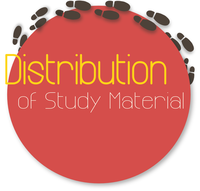Distribution of Study Material
 |
With the distribution of learning materials you can achieve various goals: You support students in the preparation and follow-up of events - you can activate prior knowledge before an event session or make it easier for students to prepare for an exam. By providing self-learning materials, an individualisation and flexibilisation of learning can be achieved - this remedies event overlaps and makes it easier for working students or students with parental responsibilities to organise their studies. Methodologically, self-learning materials can be used to decouple pure knowledge transfer from the classroom and to use it for discussion, deepening or clarifying questions ("Flipped/Inverted Classroom"). Last but not least, the use of self-learning materials can promote the students' ability to self-directed learning in general and learning with digital media in particular. This page is constantly growing with the project and is regularly filled with new content. Unless otherwise stated, the following sources are valid: e-teaching.org • ilias.uni-giessen.de/ilias |
| Text Material (Script) | |
 |
What does E-Lecture actually mean? E-Teaching.org explains in a short video what the term is about. From the idea to the finished instructional or explanatory video, a number of work steps are required. E-teaching.org distinguishes between "video" and "digital video" from the production to the didactically meaningful preparation of video material in teaching. |
| Structured distribution of material | |
|
Screencast A screencast is the recording of activities that can be seen on a computer screen. However, no camera is used, but the screen content itself is recorded and then made available as video. The integration of screencasts in university teaching offers a wide range of possible applications and contributes to the consolidation of learning content. For example, guide your students through a software application and explain the individual steps and functions. In this way, you can ensure that everyone builds on a common knowledge base. Further application possibilities are shown in our explanatory video on the topic "Didactic scenarios with screencasts". |
|
 |
Podcast A podcast (in german) is a media format (e.g. audio-, screen-, doc-, video file, etc.) that can be accessed on the Internet and subscribed to, at any time. An advantage of using podcasts is, for example, that the downloaded file can be played at any time and thus enables time and location independent learning (e.g. via the MP3 player in a train or bus). |
 |
Media pool and Media objects Media pools are used to structure uploaded media such as images, graphics, audio files or text fragments and make them available for later reuse in learning modules, glossaries or other content elements. (Source: https://www.e-teaching.org/materialien/glossar/podcast (Accessed: 10.09.2019 : translated by Lehre 4.0 team)) |
 |
Bibliography In Stud.IP, literature is made available via an electronic semester course collection (eSemApp), which can be linked to the respective course.
|
